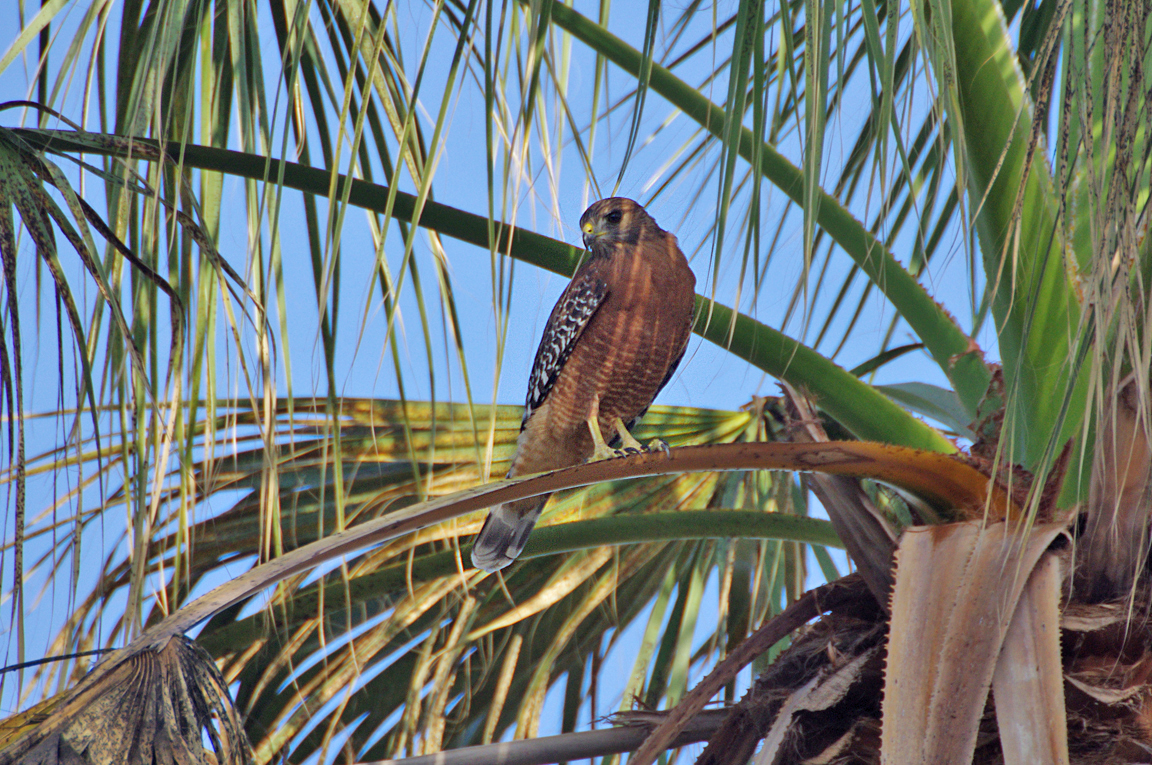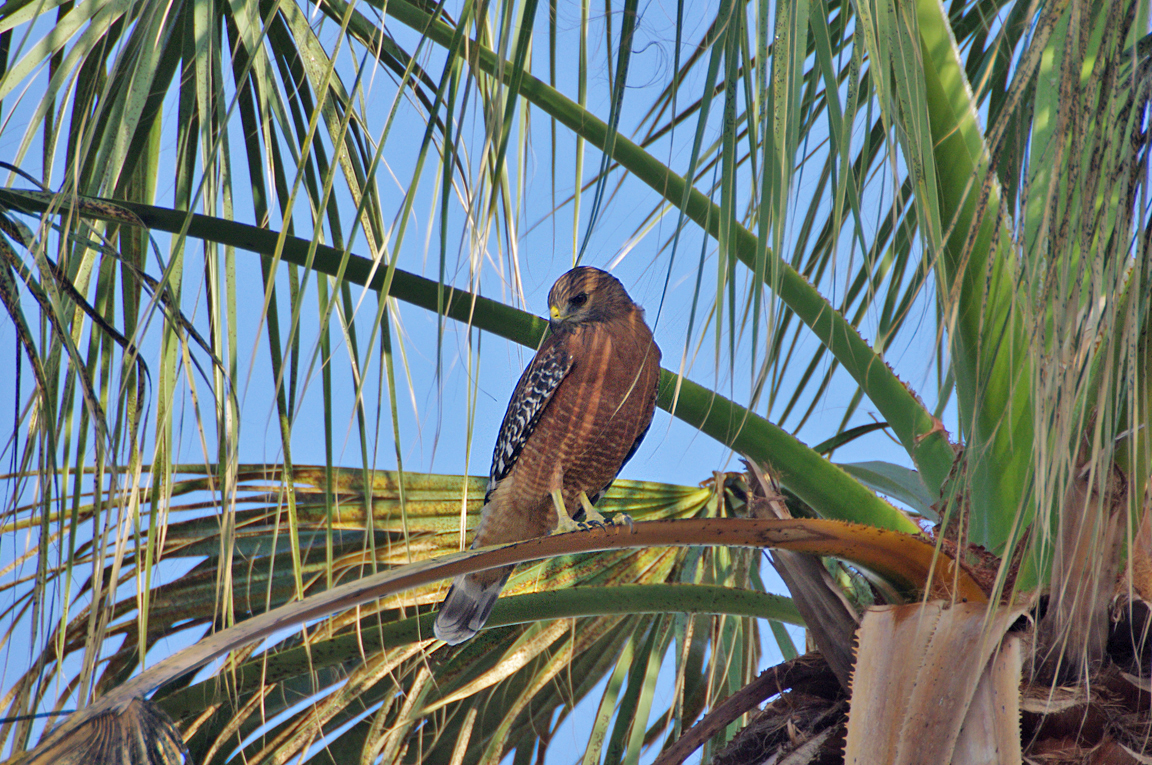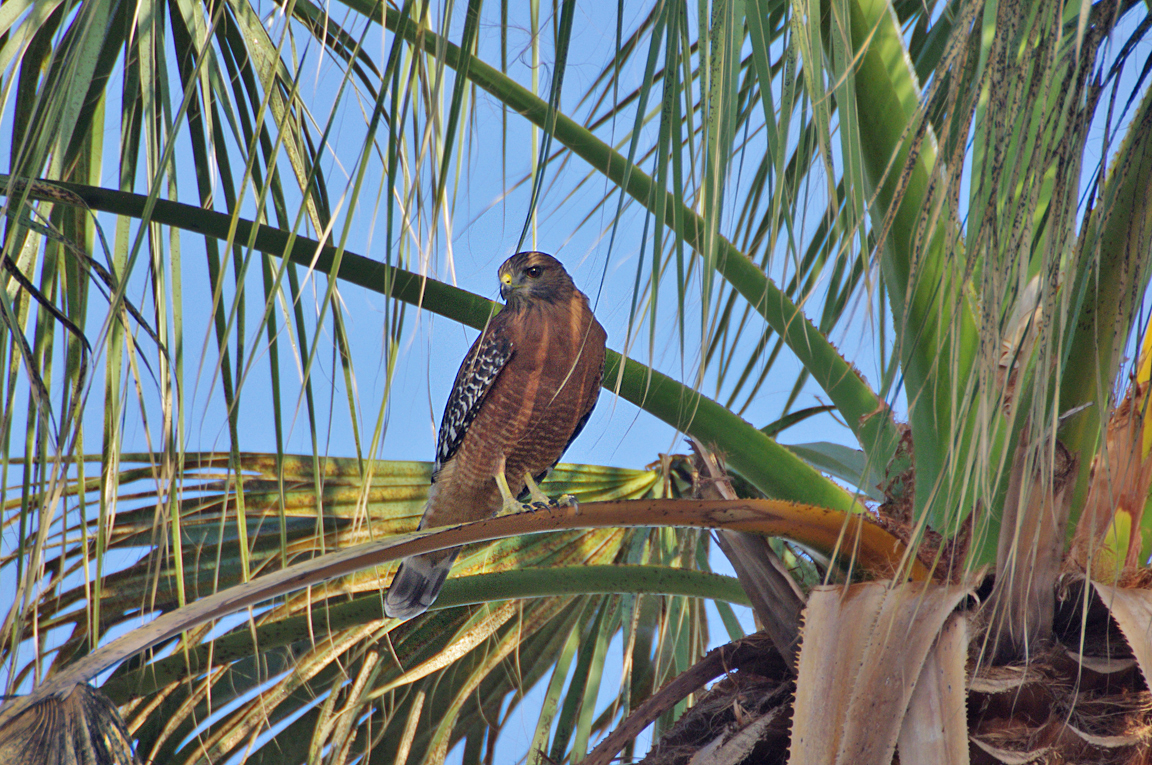|
|
|
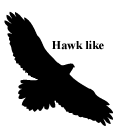 |
Red-shouldered Hawk
|
| Buteo lineatus | |
A common forest-dwelling hawk of the East and California, the Red-shouldered Hawk favors woodlands near water. It is perhaps the most vocal American hawk.
Interesting Information
-
The Red-shouldered Hawk is divided into five subspecies. The four eastern forms contact each other, but the West Coast form is separated from the eastern forms by 1600 km (1000 mi). The northern form is the largest. The form in very southern Florida is the palest, having a gray head and very faint barring on the chest.
-
Although the American Crow often mobs the Red-shouldered Hawk, sometimes the relationship is not so one-sided. They may chase each other and try to steal food from each other. They may also both attack a Great Horned Owl and join forces to chase the owl out of the hawk's territory.
-
By the time they are five days old, nestling Red-shouldered Hawks can shoot their feces over the edge of their nest. Bird poop on the ground is a sign of an active nest.
-
The Great Horned Owl often takes nestling Red-shouldered Hawks, but the hawk occasionally turns the tables. While a Red-shouldered Hawk was observed chasing a Great Horned Owl, its mate took a young owl out of its nest and ate it.
Description
Adult Description
-
Medium-sized to large hawk.
-
Wings and tail striped black and white.
-
Underparts barred reddish.
-
Pale crescent near wingtips in flight.
-
Length Range: 43-61 cm (17-24 in)
-
Weight: 499 g (17.6 oz)
-
Size: Large (16 - 32 in)
-
Color Primary: Brown, Rufous or Rust
-
Underparts: Rust-brown with fine white barring.
-
Upperparts: Dark brown with white scalloping.
-
Back Pattern: Spotted or speckled, Mottled
-
Belly Pattern: Barred or banded
-
Breast Pattern: Barred or banded, Solid
Immature
Juvenile in East streaked brown and white on underside, brown above, tail with dark and light brown bands, wing crescent tawny. Juvenile in West similar to adult, with more barring than streaking on underside and distinct tail banding
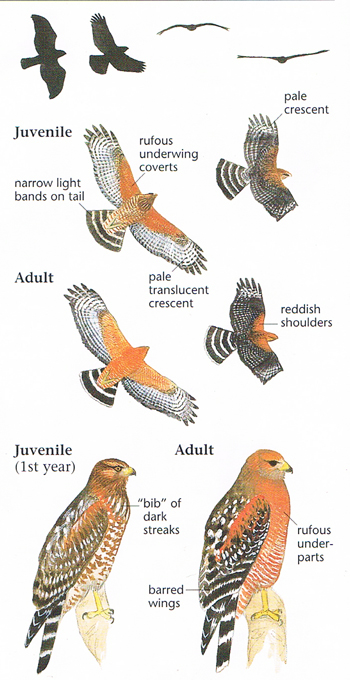
Photo taken from: The Sibley Field Guide by David Allen Sibley
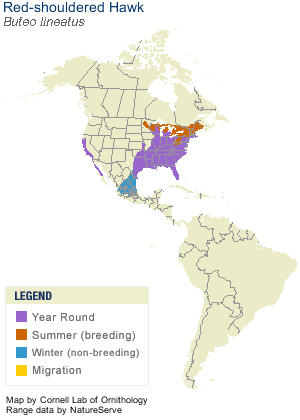
© 2003 Cornell Lab of Ornithology
|
Habitat |
|
Forests with open understory, especially bottomland hardwoods, riparian areas, and flooded swamps. |
|
Behavior |
|
Drops on prey from perch in canopy. May hunt from ground to catch mammals in burrows, hopping after them when they come out. |
|
Food |
|
Small mammals, birds, reptiles, amphibians, and crayfish. |
Taxonomy
| Kingdom: | Animalia |
| Phylum: | Chordata |
| Subphylum: | Vertebrata |
| Class: | Aves |
| Order: | Accipitriformes |
| Family: | Accipitridae |
| Subfamily: | Accipitrinae |
| Genus: | Buteo |
| Species: | Buteo lineatus |
| Subspecies: | Buteo lineatus alleni |
| Buteo lineatus elegans | |
| Buteo lineatus extimus | |
| Buteo lineatus lineatus | |
| Buteo lineatus texanus |
Similar Species |
|
Broad-winged Hawk has one broad white band on tail, and is all pale under wings contrasting with dark outline. |
|
Bird Sound |
|
Call a loud "kee-aah," with second note descending in pitch. Often given repeatedly. |
|
Eggs look like this |
|
Photo taken from: ARCTOS Collaborative Collection Management Solution |
